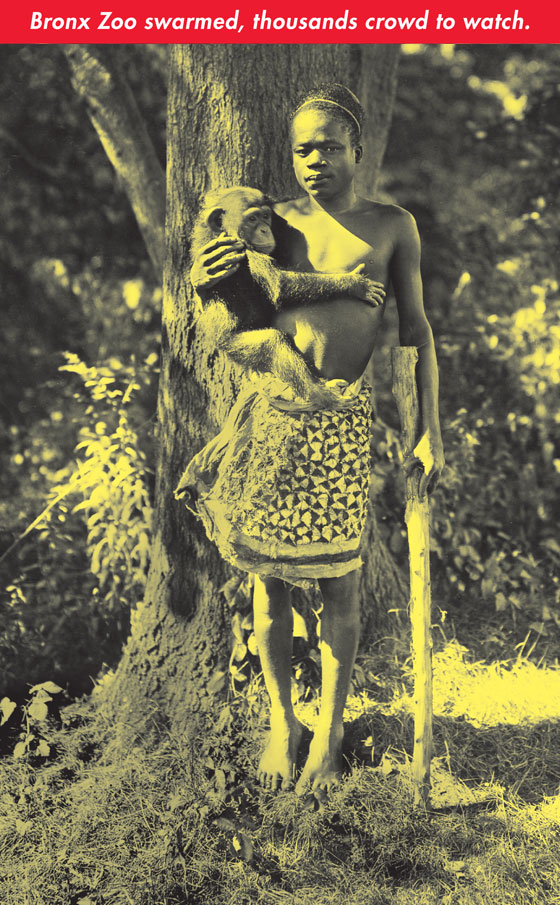
1906
Ota Benga arrived at the Bronx Zoo one day late in the summer of 1906 wearing a white linen suit. He was lugging a wooden bow, a set of arrows, and a pet chimpanzee. Twenty-three years old and twice widowed, he had already hunted elephants, survived a massacre by the Belgian colonial army, been enslaved and freed, danced at Mardi Gras, and posed alongside Geronimo in the St. Louis World’s Fair. And yet Americans were forever calling him “boy”—in part because, as one of the Congolese tribe of Mbuti pygmies, he stood less than five feet tall and weighed only 103 pounds. He spoke no English. When he smiled, he revealed a set of incisors whittled to sharp points, like a vampire bat’s.
Benga had traveled to the U.S. with the anthropologist Samuel Phillips Verner, but upon arriving in New York, Verner had gone dead broke. He contacted the zoo’s director, William Temple Hornaday, who agreed to loan Benga an apartment on the premises. Hornaday was an enlightened zookeeper and among the earliest to endorse displaying animals in naturalistic settings. He also happened to be a Darwinian racist who schemed to exhibit Benga alongside the apes.
For nearly two weeks, Benga roamed the grounds unnoticed; to the zoo’s visitors, he was just a small, somewhat strange black man. But over time, at the urging of Hornaday, the zookeepers convinced Benga to play with the orangutan in its cage. Benga obliged. Crowds gathered to watch the two monkeying around. The keepers gave Benga his bow and arrow; he shot targets, squirrels, the occasional rat. Bones were scattered about the cage to add a whiff of cannibalism. The keepers goaded Benga to occasionally charge the bars of his enclosure, baring his sharp teeth. Children screamed. Adults were at turns horrified and titillated. “Is that a man?” a visitor asked. A circus owner offered to throw a party for Benga, a French spinster offered to purchase him, and a black manicurist offered to paint his nails. Hornaday posted a sign outside of the cage, displaying Benga’s height, weight, and how he was acquired. “Exhibited each afternoon during September,” it concluded.
Alerted to the situation by a story in the New York Times, a group of Baptist clergymen became incensed. They wrote letters to the city papers and traveled to the office of Mayor George B. McClellan, who hid in his office and sent out a note telling them to address their complaints to the New York Zoological Society.
Hornaday took down the sign and banned Benga from entering the monkey cage, but the furor only escalated. The zoo attracted as many as 40,000 visitors a day in mid-September, many of whom hounded Benga throughout the grounds. Unable to articulate his frustration, Benga repeatedly lashed out, shooting one visitor in the calf with an arrow and brandishing a knife at a zookeeper. In public, Hornaday seemed unconcerned by the controversy. In a letter to the mayor, he wrote, “When the history of the Zoological Park is written, this incident will form its most amusing passage.” Meanwhile, he privately wired Verner an SOS. “Boy [has] become unmanageable, also dangerous … Please come for him at once.”